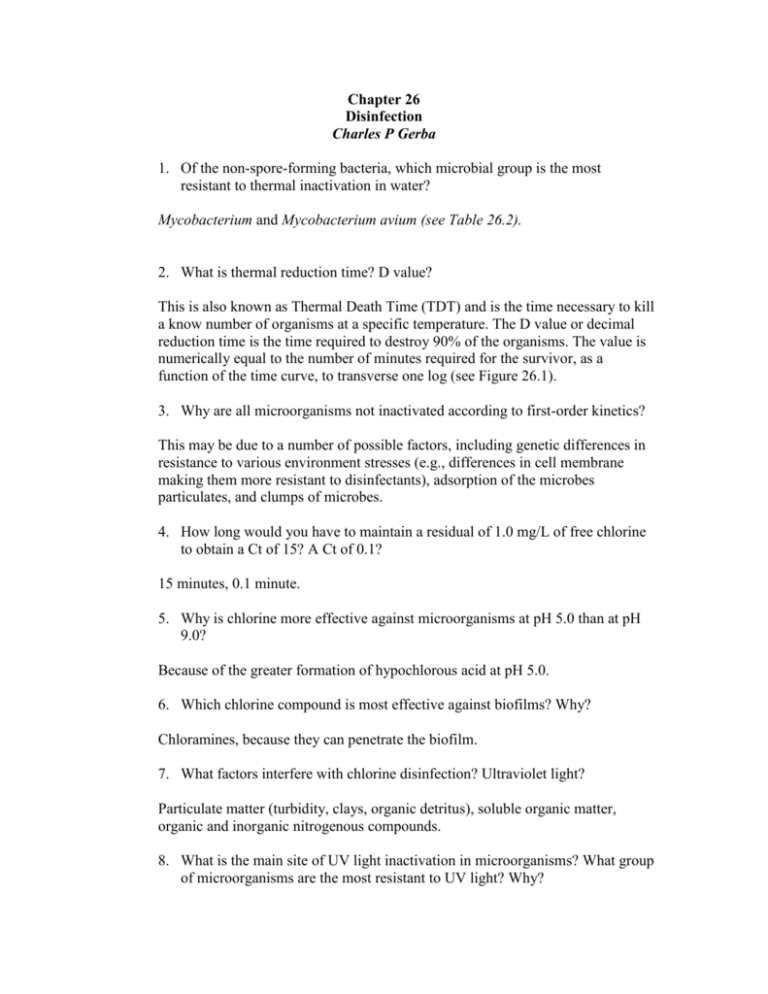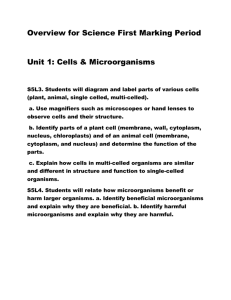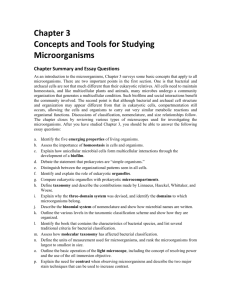Chapter 26 Answers
advertisement

Chapter 26 Disinfection Charles P Gerba 1. Of the non-spore-forming bacteria, which microbial group is the most resistant to thermal inactivation in water? Mycobacterium and Mycobacterium avium (see Table 26.2). 2. What is thermal reduction time? D value? This is also known as Thermal Death Time (TDT) and is the time necessary to kill a know number of organisms at a specific temperature. The D value or decimal reduction time is the time required to destroy 90% of the organisms. The value is numerically equal to the number of minutes required for the survivor, as a function of the time curve, to transverse one log (see Figure 26.1). 3. Why are all microorganisms not inactivated according to first-order kinetics? This may be due to a number of possible factors, including genetic differences in resistance to various environment stresses (e.g., differences in cell membrane making them more resistant to disinfectants), adsorption of the microbes particulates, and clumps of microbes. 4. How long would you have to maintain a residual of 1.0 mg/L of free chlorine to obtain a Ct of 15? A Ct of 0.1? 15 minutes, 0.1 minute. 5. Why is chlorine more effective against microorganisms at pH 5.0 than at pH 9.0? Because of the greater formation of hypochlorous acid at pH 5.0. 6. Which chlorine compound is most effective against biofilms? Why? Chloramines, because they can penetrate the biofilm. 7. What factors interfere with chlorine disinfection? Ultraviolet light? Particulate matter (turbidity, clays, organic detritus), soluble organic matter, organic and inorganic nitrogenous compounds. 8. What is the main site of UV light inactivation in microorganisms? What group of microorganisms are the most resistant to UV light? Why? The nucleic acid. Viruses. The small size of nucleic acid and some of them such as the adenoviruses can use the host repair enzymes to repair the UV light damage to the nucleic acid. 9. At what pH is iodine most effective against protozoan parasites? Why? At low pH iodine is more effective against some protozoan cysts because they are more sensitive to I2 than HOCl. 10. What is photoreactivation? Are all microorganisms capable of photoreactivation? Why? This is when the UV-light-damaged bacteria repair the nucleic acid by the activation of photoreactivating enzyme, which binds and then splits the thymine dimmers. No. Not all bacteria have the enzyme needed to repair the damaged nucleic acid. 11. What are two sources of ionizing radiation? How does ionizing radiation kill microorganisms? Radioactive materials (cesium-127 and cobalt-60) and high-energy electron beams. They inactivate microorganisms either directly or indirectly by production of free radicals. 12. Why does suspended matter interfere with the disinfection of microorganisms? It interferes with the disinfectant reaching the microorganism. This may happen by the suspended matter reacting with the disinfectant, protection of the microorganism when adsorbed to the suspended matter, or the suspending matter may coat the organism (the microorganism is inside of a clump of suspended matter).











